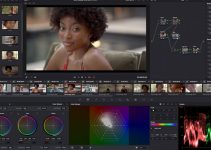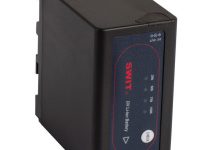If one of the new hobbies you want to learn these days is filmmaking, you’ll need a camera. The good news is that there are dozens of great options out there. The bad news is that there are dozens of great option out there. How do you pick a high-performing budget option for beginning filmmaking in 2020?
One way is to check out what experts recommend. One voice on YouTube is filmmaker Canaan Berger of Camber Motion. This video highlights four options of varying prices and features that should make it easy for filmmakers on a budget to find the right one for them. All of them have a minimum of 4K at 24 fps, Full HD at 60 fps, and an external microphone input.
Leading off with the affordable options we have the Canon EOS M50 and Sony a6100. Both are APS-C models, meaning we have a 1.6x crop factor on the M50 and 1.5x with the a6100. This is due to slight differences in the sensor size between the brands.
The M50 I think has an advantage with its vari-angle touchscreen compared to just a 180-degree flip-up for the a6100. However, the M50 has an additional 1.6x crop in 4K while the a6100 does true downsampling of the entire 6K capture area. Also, the a6100 has 120 fps in Full HD vs the M50’s 60 fps in Full HD
There are plenty of other difference to be had with the two cameras, and one that shouldn’t be overlooked is the upgrade path. The Canon M mirrorless line is quite restricted to either EF-M lenses or DSLR lenses via adapters.
The Sony a6100 works with all E-mount lenses, including full-frame, if you decide you want something where lens investments will be worthwhile for the future. The Canon, however, in my opinion, has better ergonomics and can be found for cheaper.
If you are looking to make a better investment from the start, that is where we start moving up to full-frame cameras. The two recommended are the Canon EOS R and Sony a7III. Generally speaking, full-frame will offer better performance in low light and the ability to create images with a shallower depth of field.
Comparisons are similar between these cameras and the APS-C cameras. The EOS R has a vari-angle touchscreen and the a7III has a tilting touchscreen. Also, the EOS R has an aggressive 1.8x crop in full-frame while the a7III does full-sensor readout. And, the EOS R is limited to 60 fps in Full HD while the a7III can hit 120 fps.
These are all good options – the a7III is my main camera for video these days—and should help people find a good beginning camera. However, before we go, I would like to throw in my own mid-range option – the FUJIFILM X-T30.
The X System is APS-C only, so no full-frame upgrade if you opt for this path, but it is a surprisingly good option for video. It’ll do 4K video with ease and has Full HD up to 120 fps. Also, if you decide to upgrade later to the X-T3, you’ll gain 4K video at up to 60 fps, something none of the other cameras here have.
Do you agree with these recommendations?
Order Links:
- Canon EOS M50 Mirrorless Camera (B&H, Amazon)
- Canon EOS M50 Mirrorless Camera Video Creator Kit (B&H, Amazon)
- Sony Alpha a6100 Mirrorless Camera (B&H, Amazon)
- Canon EOS R Mirrorless Camera (B&H, Amazon)
- Sony Alpha a7III Mirrorless Camera (B&H, Amazon)
- FUJIFILM X-T30 Mirrorless Camera (B&H, Amazon)
- FUJIFILM X-T3 Mirrorless Camera (B&H, Amazon)
Disclaimer: As an Amazon Associate partner and participant in B&H and Adorama Affiliate programmes, we earn a small comission from each purchase made through the affiliate links listed above at no additional cost to you.



